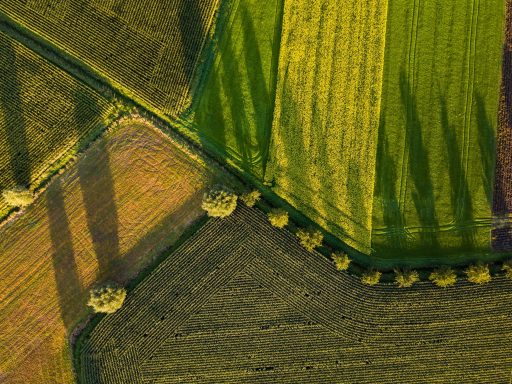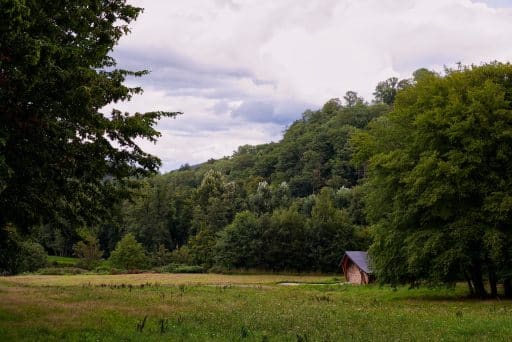Blog
Conserving Biodiversity in Belgium Agriculture
Posted 30th September 2023
The crucial role of agroecology and sustainable farming
The crucial role of agroecology and sustainable farming

What is biodiversity and what is its importance?
Biodiversity, often referred to as the variety of life on Earth, encompasses a wide range of species, ecosystems, and genetic diversity. Biodiversity plays a fundamental role in shaping the health of ecosystems, supporting human well-being, and maintaining the delicate balance of our planet’s interconnected systems. Moreover, more than 50% of the global GDP is highly or moderately dependent on ecosystem services. However, despite the importance of biodiversity, there is a sharp decline in biodiversity globally due to natural and anthropogenic causes. Unlike natural causes such as climate change and invasive species, agriculture is a major cause of biodiversity decline and loss.
What is the current status of biodiversity in Belgium?
Belgium is a country located in Western Europe. Most often, when people think of Belgium, images of delicious chocolate and its rich history, diversity and culture are the first thoughts that come to mind. Belgium, however, has a rich agricultural history and diverse landscapes and has long been a key player in Europe’s food production. The European Union has enacted several Environmental Legislations and policies, such as the European Bird and Habitat Directive (EEC 1979, 1992) that provide the legal basis for the Natura 2000 Biodiversity Network. The European Bird Directives (2009/147/EC) offers protection for birds in natural and agricultural land as well as migratory species and their habitats. However, despite these existing instruments, only 4.3 per cent of Belgium’s habitat assessments indicate a good conservation status, which is below the European Union average of 14.7 per cent. The country’s modern agricultural practices fuelled productivity, and equally pose a threat to the country’s biodiversity. The loss of biodiversity not only affects the natural balance but also has far-reaching implications for food security and the resilience of ecosystems.

Figure 1. Intensification and mechanistic agricultural practices. Photograph by Chris Ensminger on Unsplash
The Challenge of Biodiversity Loss in Belgian Agriculture
Belgium’s agricultural and farming system is an intensification agricultural system, driven by the demand for increased yields and efficiency. Representing 21 per cent of the causes of biodiversity loss, agriculture is the most frequently reported pressure for habitat and species. Abandonment of grasslands and intensification particularly impact pollinator species, farmland birds and semi-natural habitats. Intensification and excessive use of agrochemicals and monoculture cropping have equally led to the degradation of natural habitats. These practices have contributed to the decline of various plant and animal species, impacting pollinators, soil health, and water quality. In addition, agricultural activities account for 48 per cent of all pollution-related pressures on habitats and species. As biodiversity dwindles, the stability of agricultural systems becomes increasingly fragile.
Agroecology: A Pathway to Biodiversity Conservation and the future we want.
Agroecology is a holistic approach to farming that integrates ecological principles with social and economic considerations in order to improve the sustainability and resilience of agricultural systems and safeguard biodiversity. Agroecology creates resilient and productive farming systems that mimic natural ecosystems, encouraging biodiversity, reducing chemical inputs, and enhancing the overall sustainability of agricultural systems. Agroecology provides a highly diversified agricultural system based less on chemicals, thus an improved soil and ecosystem health. On 27 January 2016, a European Association designated to promote agroecology was created in Graux, Estate, Belgium. The goal was to place agroecology high on the European agenda of sustainable development of farming and food systems. In Belgium, the adoption of agroecological practices holds promise for restoring biodiversity while maintaining agricultural productivity.

Figure 2. Agroecological agriculture in Belgium. Photograph by Valérie Ungerer on Unsplash.
Key Principles of Agroecology
The European Union proposes nine specific principles considered to be following agroecological principles. Some of these agroecological principles directly impact biodiversity conservation and preservation include;
- > Diversification or mixed cropping: Agroecological farms promote the cultivation of a variety of crops, which not only reduces the risk of pests and diseases but also provides habitat and food for a wide range of species.
- > Crop Rotation and Polyculture: Agroecology permits the alternating of crops and growing of multiple crops together increasing soil fertility and resilience, benefiting both farmers and wildlife and biodiversity. Minimal Chemical Inputs: Agroecology reduces reliance on synthetic pesticides and fertilizers, creating healthier environments for beneficial insects and microorganisms.
- > Conservation of Natural Habitats: Integrating natural elements like hedgerows, buffer strips, and wildflower patches provides shelter and forage for wildlife, creating ecological corridors within agricultural landscapes.
- > Reduced Soil Disturbance: Minimal tillage practices prevent soil erosion, enhance soil structure, and promote the presence of soil-dwelling organisms.
What benefits does Agroecology offer to the Society?
Agroecology offers a whole range of benefits to the society and farmers. This holistic approach to agriculture focuses on sustainability, ecological health, and social well-being, making it a valuable alternative to conventional farming methods. Some benefits of agroecology to society and farmers include; sustainable food production improved soil health, resilience to climate change, reduced environmental impact farmers’ empowerment, the enhancement of community resilience, healthy food and nutrition and biodiversity conservation amongst many other benefits. Meanwhile in Belgium, agroecology offers the opportunity for cultural heritage where traditional farming practices are preserved and celebrated, maintaining Belgium’s unique agricultural heritage.
Conclusion
Conserving biodiversity in Belgian agriculture is a vital step toward building resilient and sustainable food systems. Agroecology and sustainable farming practices offer a holistic approach that not only supports the well-being of ecosystems but also benefits farmers, consumers, and the country as a whole. Agroecology acknowledges the interdependence of humans to all forms of life, including the necessity of working with nature. By prioritizing biodiversity in agriculture, Belgium can pave the way for a more harmonious relationship between food production and nature, ensuring a brighter future for both and meeting up with European Environmental Policies and UN sustainable Goals of halting biodiversity loss by 2030.
About the author
Enyi Emmanuel Nfor holds a B.Sc. in Biology, an M.Sc. in Biology: Biodiversity; Conservation and Restoration and an M.Sc. in Water Sustainability: Integrating Technology and Nature-based Solutions; and is working towards an M.Sc. in Statistical Data Analysis. Emmanuel’s professional and academic experience covers areas including biodiversity, conservation science, restoration ecology, water resources management, integrated water management, and nature-based solutions and statistics. Emmanuel has managed projects in various fields such as protected area management and climate change mitigation and adaptation for government institutions as well as NGOs across Africa and Europe (Cameroon, Nigeria, Kenya, Tanzania and Belgium). He is passionate about supporting policy developments and decision-making processes for many of the topic areas mentioned above, to foster sustainable development through data-driven solutions and research.
References
Krishna, C., Donham, J., & Wezel, A., (2023). Eco-schemes in EU member states could benefit from more agroecology (Policy brief). Agroecology for Europe (AE4EU). HAL-04122727.
Kukkala, A. S., Santangeli, A., Butchart, S. H. M., Maiorano, L., Ramirez, I., Burfield, I. J., & Moilanen, A. (2016). Coverage of vertebrate species distributions by Important Bird and Biodiversity Areas and Special Protection Areas in the European Union. Biological Conservation, 202, 1-9.
United Nations, The human right to a clean, healthy and sustainable environment: resolution adopted by the General Assembly, 2022.
Vikolainen, V., Bressers, H., & Lulofs, K. (2013). The role of Natura 2000 and project design in implementing flood defence projects in the Scheldt estuary. Journal of environmental planning and management, 56(9), 1359-1379
Verhulst, J., Kleijn, D., Loonen, W., Berendse, F., & Smit, C. (2011). Seasonal distribution of meadow birds in relation to in-field heterogeneity and management.
Agriculture, ecosystems & environment, 142(3), 161-166. https://www.agroecology-europe.org/wp-content/uploads/2022/12/Young-Europeans
Photographs
- Feature photo by Yulian Alexeyev on Unsplash